Everything you need to know about Solange peonies
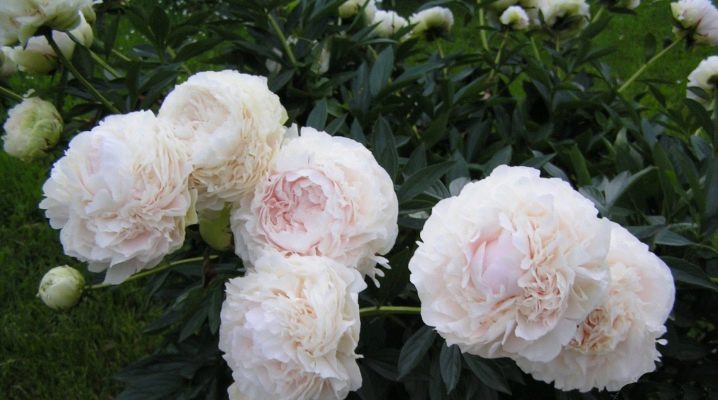
Every gardener, and just a flower lover, wants to decorate his summer cottage, his favorite flower bed with beautiful flowers and plants. One of the most beautiful decorations in any space is the Solange peony. These are exactly the flowers that will delight the eye with their delicate flowering and pleasant aroma. And also do not require much time in care.
Description
Peony "Solange" is a perennial herb with a flower diameter of 19 cm, up to one meter high. The spreading bush is formed by dense, strong stems with double flowers. Fleshy, bright green leaves are elongated with a pointed end. The leaves are about 30 centimeters long. Large flowers are snow-white, cream, pale pink color.
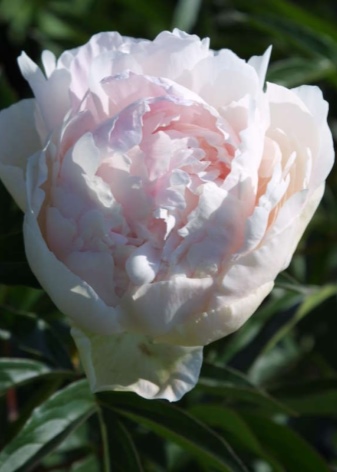

Flowering time
"Solange" refers to late-flowering peony species. Spherical, dense buds begin to delight the eye in late June-early July, decorating the bushes for quite a long time. The opening of the bud is slow, the peony blooms for a long time and abundantly. In place of the flowers, after wilting, fruits are formed, which are cut in the first half of autumn, if seed reproduction is planned for the next year.
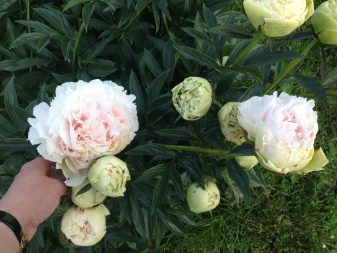
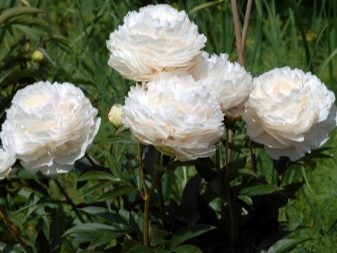
Influence of weather conditions, pests
The plant is highly resistant to low temperatures due to its strong root system - the variety is able to withstand up to 40 degrees of frost. It is this factor that allows the plant to be grown in regions with a harsh climate. Also, the peony has a fairly good immunity to insect pests, various fungal and viral diseases. Resistant to heat, heavy rainfall.
Solange can grow in one place without transplanting for 20 years.
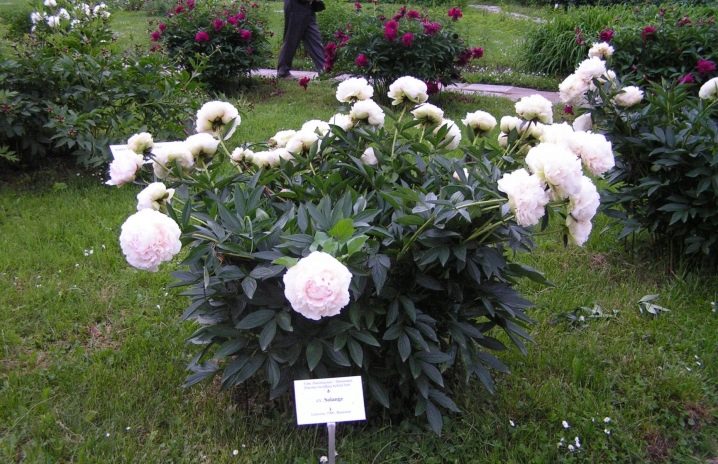
Planting and growing
Peony "Solange" is recommended to be planted in early spring, if there is no threat of frost, as well as in autumn. The best time to plant bushes is from September to October. The handsome peony is undemanding to planting and further cultivation.
Step-by-step disembarkation process.
- Prepare a root hole approximately 55-65 centimeters deep, 35-45 centimeters wide. You should pay attention to the size of the planting material.
- Lay drainage at the bottom of the hole with a layer of 13-17 centimeters. Drainage can be: expanded clay, broken brick, crushed stone, stones with a diameter of 1-3 cm.
- Pour a layer of sand 4-6 cm thick on top, and on the sand - 4-6 cm of cow dung, mixed in equal shares with the land of the plot. In conclusion, you can lay a small layer of peat with sawdust, ash.
- Fill the hole well with water, wait until it is absorbed.
- Plant the roots of the bush, cover with soil. Do not deepen the buds more than 10 centimeters into the ground.
It is important to know that the place where the bushes will be planted must be well lit, otherwise there is a risk that the bushes will not bloom.
Peony is a fairly large bush, it takes a large amount of nutrients from the soil... Therefore, you should not plant it close to other plants, otherwise the "war" of the peony with other flowers can lead to the death of all species.
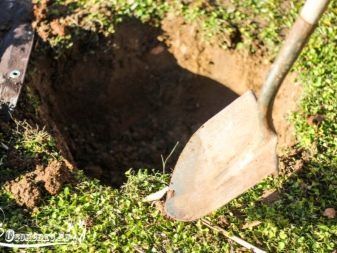
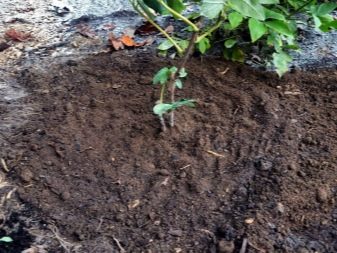
It is not recommended to plant a flower near a place where a large influx of water can occur.
Stagnant fluid can lead to root death. Solange prefers loamy soil, which allows air to pass through well. Also, when planting, you need to fertilize the roots.

Watering rules.
- Generous watering is required immediately after planting. The first three days, you need to pay attention to the moisture content of the earth, water the bush once every 2 days.Further, the procedure should be shortened.
- Be sure to loosen the soil after each watering.
- It is best to water more abundantly, but less frequently.
- Already well strengthened, an adult bush can "drink" 25-30 liters of water. It is worth remembering this, especially in a hot period.
- Subsequent watering should be done only when the top layer of the earth dries up.
- At the beginning of autumn, watering must be completely stopped.


Planting material
It is advisable to purchase planting material in nurseries, and those plants on which there are 2-3 buds. It is also worth paying attention to the rhizomes: they must be elastic, without damage, rot, holes, where pests can be located. To prevent the buds of the plant from sprouting on the planting material in the spring, several very simple recommendations should be followed:
- the roots must be soaked for 40-60 minutes, in a weak solution of potassium permanganate;
- after soaking, place on a dry cloth, dry for about 2 hours;
- root sections should be treated with brilliant green solution;
- after the brilliant green dries, treat it with a special growth stimulant powder;
- can be soaked in liquid stimulant for 1-1.5 hours.
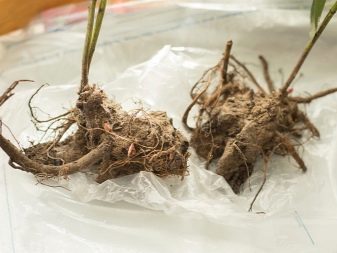
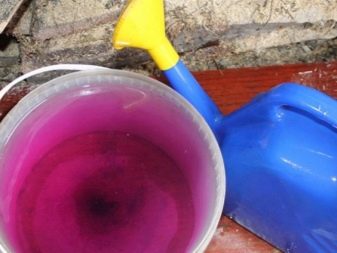
Care features
Peony "Solange" is just as picky about leaving as about planting. It does not require particularly complex manipulations. It can be for quite a long time without proper attention, fertilizers for 6-7 years.
After the bushes begin to grow worse, the flowers become smaller.
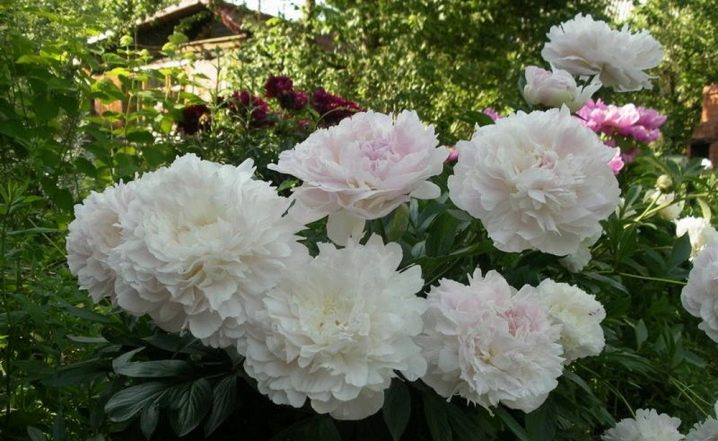
What else you need to know about caring for ornamental shrubs, we will consider further.
- Bush pruning should be done in late summer, early autumn. Cut off the stems, leaving 3-4 cm from the soil.
- During the season (summer), cut off dried, broken, damaged leaves and stems.
- Also remove dried flowers if there is no need to collect seeds.
- It is required to loosen the soil about 3-4 times a month. Especially after severe drought and rains.
- Peonies do not like weeds, so it is worth harvesting them. Weeds can carry various diseases and breed pests.
- We must not forget about disease prevention. In early spring or autumn, spray with a fungicide solution. Also, monitor the cultivation technique so that the plant does not get sick with root rot, rust.
- For ants and pests, you can use the preparations "Fufanon", "Iskra".
- If the bush is heavily flooded with rains, it is imperative to dig a small hole through which excess moisture can escape.
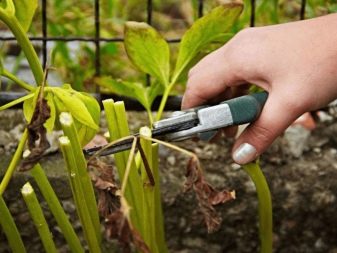
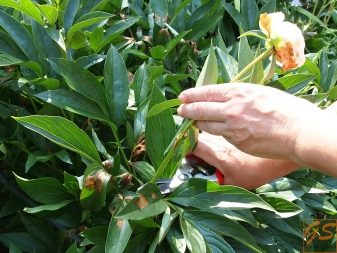


Specialist recommendations
No matter how easy the peony is to care for, there is still a threat of loss of the plant, if not follow a number of simple rules that you need to adhere to.
- The main thing is to choose the right place to place the flower, that is, an area that is sufficiently lit. If planted in the shade, you don't have to wait for flowering.
- The planting depth should not be great, otherwise it will lead to poor growth of the buds themselves. If the roots are planted too close to the surface of the earth, then the risk of drought from the sun, death from frost increases. The exact calculations for planting a bush can be found in the item "Planting and growing".
- Experienced growers give advice on feeding: it is better to underfeed the bush than overfeeding. If the land during planting itself is rich in useful properties, minerals, then feeding is sufficient once a year. Otherwise, if necessary - twice a year, that is, in spring and autumn.
- With abundant moisture, the roots become infected with gray rot, which can lead to death. An excess of water also affects the buds, which "having drunk" water will not be able to bloom. As mentioned above, you can get rid of moisture using a hole, but if the method does not help or the rainy weather does not pass, you need to purchase anti-rot products in the store.
- Remember to water the plant at the very beginning of growth. The watering rules can be found above.
- Peonies must not be cut before the end of autumn. This will lead to poor growth, poor flowering later on.
- If foliage curl occurs, this is a viral disease. It will no longer be possible to save the plant, so the bush must be urgently removed so that other plants do not become infected through the soil.
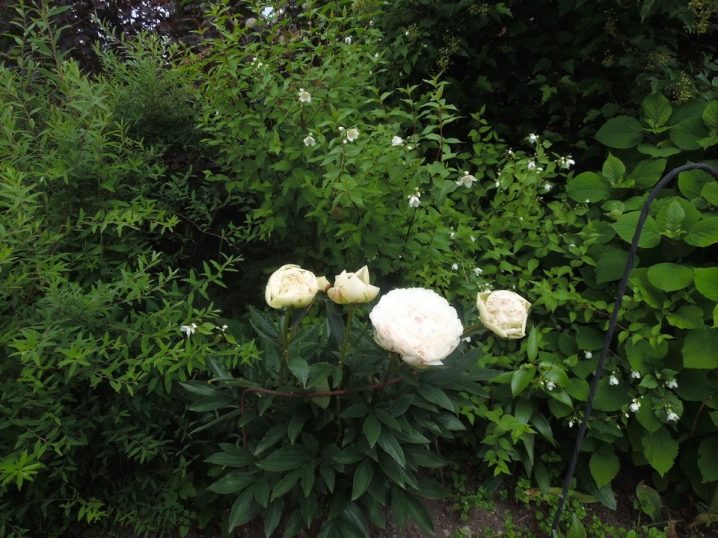
For information on how to properly care for the Solange peony, see the next video.







































































































The comment was sent successfully.